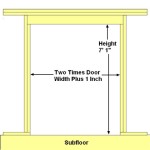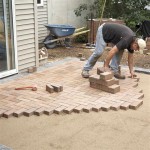Patio Furniture Webbing Replacement: A Comprehensive Guide
Patio furniture, designed for outdoor use, is frequently exposed to the elements. Over time, the webbing, typically made from vinyl or nylon, can become brittle, faded, saggy, or even break. Rather than discarding otherwise functional patio furniture, replacing the webbing provides a cost-effective and sustainable solution. This article will detail the process of patio furniture webbing replacement, covering necessary tools, materials, various webbing types, and step-by-step instructions for a successful restoration.
The decision to replace webbing often stems from aesthetic concerns and functional deterioration. Faded colors detract from the overall appearance of the patio or deck, while sagging webbing compromises comfort and support. More critically, broken webbing renders the furniture unusable and potentially dangerous. Replacing the webbing offers a significant cost saving compared to purchasing new furniture, especially for high-quality frames that are still structurally sound. Furthermore, webbing replacement allows for customization, enabling homeowners to personalize their outdoor space with different colors and patterns.
Understanding Different Types of Patio Furniture Webbing
Selecting the correct type of webbing is crucial for the longevity and appearance of the repaired furniture. Webbing is available in various materials, widths, and styles, each with its own set of advantages and disadvantages. Common webbing types include vinyl, nylon, and olefin.
Vinyl Webbing: Vinyl webbing is a popular choice due to its durability, resistance to fading, and ease of cleaning. It is typically available in a wide range of colors and widths, making it suitable for various types of patio furniture. Vinyl webbing is generally more affordable than nylon webbing. It is often treated with UV inhibitors to minimize fading in sunlight. However, vinyl can become brittle in extreme cold and may crack over time if not properly maintained. Vinyl webbing is attached using screws, rivets, or clips, depending on the furniture design.
Nylon Webbing: Nylon webbing offers superior strength and elasticity compared to vinyl. It is more resistant to tearing and stretching, making it a good option for furniture that experiences heavy use. Nylon webbing also tends to be more comfortable than vinyl due to its softer texture. However, nylon webbing is generally more expensive and may be more susceptible to fading if not treated with UV protectants. Like vinyl, nylon webbing can be attached using screws, rivets, or clips.
Olefin Webbing: Olefin webbing is known for its excellent resistance to stains, mildew, and fading. It is a good choice for humid climates or areas where spills are common. Olefin is a synthetic fiber that is lightweight and quick-drying. While not as strong as nylon, it offers a good balance of durability and affordability. Olefin webbing is typically attached using similar methods as vinyl and nylon.
Beyond the material, webbing also varies in width and profile. Common widths include 1 inch, 1.5 inches, and 2 inches. The width should match the original webbing as closely as possible to ensure proper fit and support. Profiles can be flat, rounded, or grooved, affecting the appearance and comfort. The selection should be based on the dimensions of the existing frame and desired aesthetic.
Necessary Tools and Materials for Webbing Replacement
Before commencing the webbing replacement, it is essential to gather the necessary tools and materials. Having everything readily available will streamline the process and ensure a successful outcome. Required items typically include:
New Webbing: The type and amount of webbing will depend on the existing furniture and the chosen replacement. Measure the existing webbing carefully to determine the required length. It is advisable to purchase slightly more than needed to account for errors and ensure a proper fit.
Screwdriver or Rivet Gun: The tool required will depend on the existing attachment method. If the old webbing is secured with screws, a screwdriver of the appropriate size will be needed. For rivets, a rivet gun is essential for both removing the old rivets and installing new ones.
Measuring Tape: Accurate measurements are critical for ensuring a proper fit. A measuring tape will be used to determine the length of the old webbing and to cut the new webbing to the correct size.
Scissors or Utility Knife: These tools are used to cut the new webbing to the desired length. A sharp utility knife is generally preferred for vinyl webbing, as it provides a clean, straight cut. Scissors may be sufficient for nylon or olefin webbing.
Webbing Clips or Screws: These are used to secure the new webbing to the frame. The type of clips or screws will depend on the furniture design. It is important to use the correct size and type to ensure a secure and durable attachment.
Hammer (Optional): A hammer may be needed to tap in webbing clips or to help remove stubborn rivets.
Pliers (Optional): Pliers can be useful for gripping and maneuvering webbing, especially when working with tight spaces.
Safety Glasses: Protecting the eyes is crucial when working with tools and materials that can produce flying debris. Safety glasses should be worn throughout the webbing replacement process.
Work Gloves: Gloves will protect the hands from scratches and abrasions, as well as provide a better grip on the webbing and tools.
Step-by-Step Guide to Replacing Patio Furniture Webbing
Following a systematic approach is crucial for successfully replacing patio furniture webbing. The process involves removing the old webbing, preparing the frame, installing the new webbing, and securing it properly.
Step 1: Removing the Old Webbing: Begin by carefully examining how the old webbing is attached to the frame. If screws are used, remove them with the appropriate screwdriver. If rivets are used, employ a rivet gun to drill out the center of each rivet. Take care not to damage the frame during this process. For webbing secured with clips, use a screwdriver or pliers to carefully pry the clips open and release the webbing. Once all fasteners are removed, detach the old webbing from the frame.
Step 2: Preparing the Frame: After removing the old webbing, inspect the frame for any damage or rust. Clean the frame thoroughly with soap and water to remove any dirt or debris. If rust is present, use a wire brush or sandpaper to remove it and apply a rust-inhibiting primer. Allow the primer to dry completely before proceeding.
Step 3: Measuring and Cutting the New Webbing: Measure the length of the old webbing or the distance between attachment points on the frame. Add a few inches to this measurement to allow for overlap and secure attachment. Cut the new webbing to the required length using scissors or a utility knife. Ensure the cut is clean and straight to prevent fraying.
Step 4: Installing the New Webbing: Starting at one attachment point, insert the end of the new webbing into the corresponding clip or align it with the screw hole. If using clips, insert the webbing and tap the clip closed with a hammer. If using screws, align the webbing with the screw hole and secure it with a screw. Pull the webbing taut as it is attached to ensure a snug and supportive fit. Continue this process, working along the frame and ensuring that each section of webbing is evenly spaced and properly tensioned.
Step 5: Securing the Webbing: Once all of the webbing is in place, double-check that each attachment point is secure. Ensure that the webbing is taut and evenly spaced. If using screws, tighten them securely. If using rivets, install new rivets using the rivet gun. If using clips, ensure they are firmly closed and holding the webbing securely. Trim any excess webbing, leaving enough overlap to prevent fraying.
Step 6: Final Inspection: After completing the webbing replacement, thoroughly inspect the furniture to ensure that all components are secure and properly aligned. Sit on the furniture to test its stability and comfort. Make any necessary adjustments to ensure a satisfactory result. This includes re-tightening screws or replacing damaged clips.
Replacing patio furniture webbing is a straightforward project that can significantly extend the lifespan of outdoor furniture. By understanding the different types of webbing available, gathering the necessary tools and materials, and following a systematic approach, homeowners can restore their patio furniture to its former glory, saving money and reducing waste. Regular maintenance, such as cleaning and occasional tightening of fasteners, will further prolong the life of the replaced webbing.

Patio Chair Webbing Replacement By The Experts Southern Company

How To Replace Lawn Chair Webbing

Diy Replacement Slings For Patio Chairs Absolute Furniture

Patio Chair Webbing Replacement Easy How To Guide Outsidemodern Deck Chairs Lawn

How To Replace Your Patio Furniture Webbing Without Spending A Fortune

Vinyl Strapping New Again

Rewebbing A Lawn Chair Without Actual Webbing Metal Chairs Patio Makeover

Replacement Sling Cover For Patio Furniture Make Your Own

How To Save Yourself Money With Diy Patio Chair Repair

How To Save Yourself Money With Diy Patio Chair Repair
Related Posts








